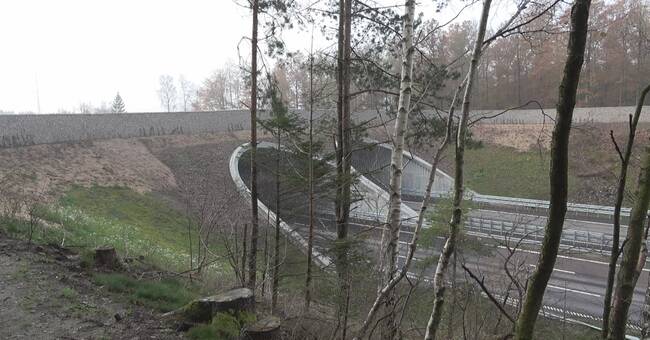Seen from the E6, the ecoduct, a bit up on Hallandsåsen, towers like a piece of a medieval castle with two arches for motorists.
On the surface, however, it does not look much like the world, a 60 meter wide mud road that goes from one forest to another.
Heather and other terrestrial plants, newly planted shrubs.
Cairns, a couple of sand mounds, felled tree trunks.
Different in a year
- But in a year it will look completely different, says Anneli Rosander, the Swedish Transport Administration's environmental specialist.
- Grass everywhere and everything has grown.
See what the animal bridge looks like and hear the Swedish Transport Administration's environmental specialist tell you how it should work in the clip above.
Here, all animals, from large moose to small lizards and insects should be able to safely cross the E6.
The snakes and lizards have been given sand and cairns, the bees can settle in a beehive and foxes and rabbits slip between the bushes.
Cameras will capture their activities.
Not for humans
In the past, the motorway was a barrier to the rich wildlife and many wildlife accidents happened.
- It feels good to see the ecoduct completed, says the Swedish Transport Administration's project manager Fatri Rexhepi.
But one thing he makes completely clear.
- This is not a bridge for people.
They should stay away from here.
The ecoduct on Hallandsåsen cost SEK 63 million and is the second in Skåne.
The first is located in Svedala.
Whether there will be more in Skåne is still unclear.

